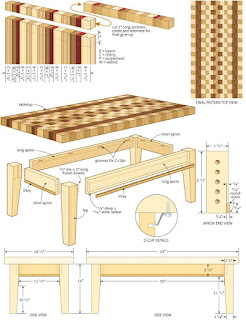Crafting the Perfect Handmade End Table: Choosing the Right Woodworking Plans
Building your own end table is a rewarding woodworking project, offering a tangible sense of accomplishment and a unique piece of furniture perfectly tailored to your home. But with countless designs available, choosing the right woodworking plans can feel overwhelming. This article guides you through selecting the ideal plans, ensuring your end table project is both enjoyable and successful.
Understanding Your Skill Level and Time Commitment
Before diving into specific plans, honestly assess your woodworking skills. Beginner plans focus on straightforward joinery, utilizing simple techniques like butt joints and dowels. These projects minimize complexity, allowing you to grasp fundamental concepts and build confidence. Intermediate plans introduce more intricate joinery, such as mortise and tenon joints or dovetail joints, leading to a sturdier and more visually appealing piece. Advanced plans often incorporate complex curves, intricate designs, and specialized techniques. Consider the time you realistically have available. A simple project might take a weekend, while a more elaborate design could require several weeks. Match your skill level and available time to the project's complexity.
Beginner-Friendly End Table Plans:
Look for plans featuring:
- Simple, straight lines and minimal curves.
- Butt joints or dowel joints for assembly.
- Clear, step-by-step instructions with plenty of diagrams.
- Commonly available lumber.
Intermediate and Advanced End Table Plans:
These plans might showcase:
- Mortise and tenon or dovetail joinery.
- More complex shapes and curves requiring specialized tools.
- Detailed finishing techniques for a professional look.
- The incorporation of unique features like drawers or shelves.
Choosing the Right Style and Design
The style of your end table should complement your existing décor. Consider your home's aesthetic: rustic, modern, traditional, or farmhouse. Do you prefer a sleek, minimalist design or something more ornate and detailed? Explore various plans online or in woodworking magazines to find designs that resonate with your personal style. Pay attention to the table's dimensions – measure your space to ensure the chosen end table fits comfortably without overwhelming the room. The plans should clearly specify the dimensions, ensuring you build an end table of the perfect size for your needs.
Exploring Different Wood Choices and Finishes
The type of wood significantly impacts both the end table's appearance and its durability. Hardwoods like oak, maple, or cherry offer superior strength and longevity, resulting in a piece that will last for years. Softwoods such as pine or fir are more affordable but less durable. Your choice should align with your budget and desired aesthetic. The finish plays a critical role in protecting the wood and enhancing its beauty. Options range from simple oil finishes to more complex stains and lacquers. Research different finishes and choose one that complements the wood type and the overall style of your end table.
Locating Reliable Woodworking Plans
Numerous resources offer high-quality woodworking plans. Online platforms such as Etsy, Ana White's website, and various woodworking blogs provide a vast collection of plans catering to different skill levels and styles. Consider the reputation of the source: look for plans with detailed instructions, clear diagrams, and positive customer reviews. Don't hesitate to invest in professionally designed plans – a well-written set of plans can significantly improve your chances of success. Remember to carefully read through all instructions before commencing your project. A little preparation goes a long way towards building a beautiful and functional end table you'll cherish for years to come.










No comments:
Post a Comment